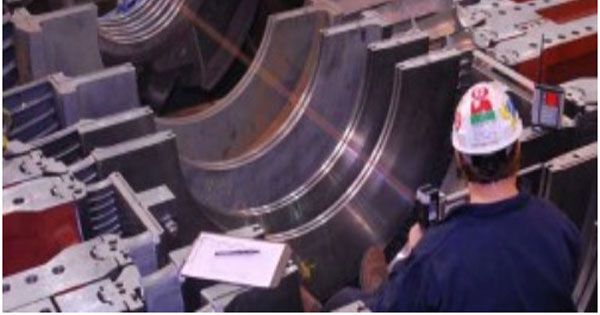Steam turbines are responsible for power and electricity generation in different industries globally. Statistically, it is expected that the steam turbine market would rise to $30.2 billion by 2027. This is due to the grown electric energy requirement worldwide. The power output capacity of steam turbines is very high due to their high-quality and functional components. However, the components face high amounts of pressure during operation that can damage their quality. Later, this can cause performance defects.
Reportedly, steam turbines operate at high inlet temperatures around 566-620°C; it also reaches 4000PSI pressure and crosses 3000RPM speed typically. Thus, it is important to conduct regular steam turbine maintenance for the components to ensure greater operational performance and longevity. This article would learn more details about available best practices to try for steam turbine operational boost and maintenance.
The importance of steam turbine operation and maintenance
Steam turbines run on hot steam formed after water mixes with natural heat sources. The gas pressurizes, then expands, and rotates the blades to cause rotational energy. Consequently, this energy generation powers the generators, which produce high quantities of electric power.
Generally, high-quality steam with no condensate entrapment and accurate steam turbine inlet pressure ensures high-quality turbine performance and reliable operations. Issues like condensate entrapment cause higher steam rates, governor valve/nozzle/blade erosion, and lower efficiency in the steam turbine movements.
Moreover, other defective issues can hamper the regular performance of a steam turbine. Therefore, quick machine maintenance and operation servicing is necessary.
Best practices for steam turbine operation and maintenance
The following are some of the best practices power plant owners can opt for to ensure enhanced steam turbine performance.
1. Ensuring better steam quality
First and foremost, the quality of steam needs to good, with zero availability of condensate entrapment in the steam supply. As mentioned earlier, this results in multiple issues, like erosion of steam components like nozzles and governor valves, higher steam turbine steam volume, and lowered turbine efficiency. Typically, condensation inside the turbine system occurs when latent energy releases from the pressurized steam. Here, adding insulation to the steam supply lines and steam turbine components like valves and casing reduces condensate entrapment.
Moreover, it is important to design the supply lines with condensate removal elements like steam trap stations and steam line drip pockets. Additionally, the steam valves should have a Class VI shutdown mechanism, and the steam trap stations should have effective blow-down valves. Such components ensure a better quality of steam and turbine operation.
2. Proper installation
Not conducting proper installation steps for the steam turbine components can cause particular problems. These include failing of the turbine blades, premature failure of bearings and couplings, and nozzle degradation. Here, it is important to make sure the installation process completes accurately to ensure fewer failures.
3. Sizing of exhaust and supply lines
It is essential to design the steam piping to give full-line steam-based pressure at the full-load capacity turbine inlets. Here, steam turbine operators should monitor and evaluate the supply line size well to calculate load capacity. Also, it is important to consider the pressure drops because of system and pipe component lengths.
To note, exhaust pressure in the discharge piping can help determine the size of the discharge line. Here, it is necessary to calculate the pressure drops as well. Indeed, high pressure can affect the performance of the turbine drastically.
4. Expansion and contraction of piping
Generally, four sources generate and exert force on the steam piping, like thrust, dead pipe weight, expansionjoint-centric spring rate, and thermal expansion. Here, it is important for a power plant operator to carefully review, design, analyze, and install steam piping to make sure the turbine flanges receive no extra force.
To note, steam turbine manufacturers should design the steam piping to contract and expand properly. Moreover, a properly-sized and accurate number of hanger supports should stay in the steam lines. Also, the forces during turbine operation should not exceed the prescribed value. In case the piping cannot flex properly during the expansion/contraction period, you can utilize expansion joints or pipe loop devices.
Expansion joints, in particular, are very useful for making all the stiff vacuum and low-pressure lines more flexible. However, it is important to install this component well so that it does not backfire during the main task. Indeed, you would notice more pipe reactions in case of wrongful installation than the already available quantity.
To note, the force needed to expand or compress the expansion joints is very high, even crossing the exhaust flange limits. So, power plant owners should add this component carefully in the accurate location and power.
5. Support to the spring piping
It is important to support the dead pipe weight with either a spring design or a rigid design. Both are useful for providing necessary piping support. However, in the case of expansion, they do not have much effect. In most installations, there are guides, supports, and anchors available for use; each of them differs in functionality.
Conclusion
Overall, it is necessary to conduct proper evaluation and analysis of the steam turbine system to understand the problem areas. Also, regular inspection and maintenance are necessary. The practices mentioned are effective maintenance and repair strategies to improve the operational performance of steam turbines.

Reblog It collaborates closely with clients to develop tailored guest posting strategies that align with their unique goals and target audiences. Their commitment to delivering high-quality, niche-specific content ensures that each guest post not only meets but exceeds the expectations of both clients and the hosting platforms. Connect with us on social media for the latest updates on guest posting trends, outreach strategies, and digital marketing tips. For any types of guest posting services, contact us on reblogit.webmail[at]gmail.com.
